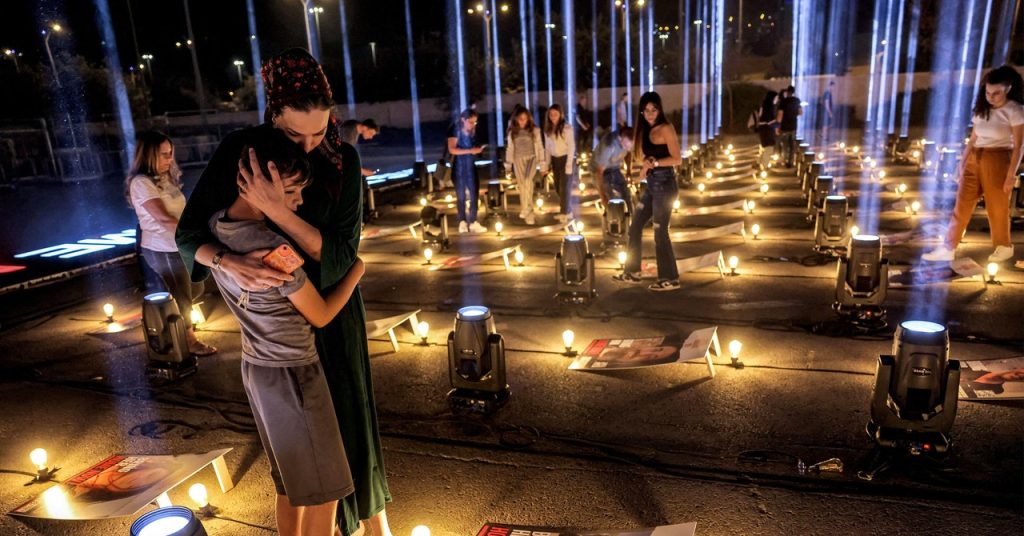Before he was kidnapped, Hersh Goldberg-Polin was a big reader. He would absorb himself in different types of books at different times, according to his father, Jonathan Polin. For a while, he was obsessed with biographies of presidents. There was a period he read exclusively about the Holocaust. Lately, he’s been reading books that, Polin says, reflect his son’s curiosity about the world. Right now, the tome by his bed is The Art of Happiness by the Dalai Lama. For 21 days, it has sat there untouched, as his family waits for Goldberg-Polin to come home.
Polin’s nightmare started on October 7, a date now etched into the Israeli psyche, when Hamas gunmen forced their way through the Gaza border wall, killing entire families, destroying border towns, and kidnapping men, women, and children. Polin was at his local synagogue when the air raid sirens went off. By the time he got home around 9 am, his wife Rachel Goldberg showed him two WhatsApp messages she’d received from their 23-year-old son an hour earlier. “We had back-to-back messages sent to us by Hersh at 8:11 am,” Polin told WIRED. “The first one said, ‘I love you.’ The second one said, ‘I’m sorry.’” They’d seen Goldberg-Polin, a dual Israeli-American citizen, the night before. The family thought he was going camping with a friend. But they soon realized he’d spent the night at the Supernova trance music festival, now known as the place where 260 people were murdered. Many others were taken back to Gaza as hostages.
Polin has spent the past three weeks sifting through photos and videos on social media, trying to piece together what happened to his son after he sent those early morning messages. The day of the attack was well documented, with both victims and perpetrators posting footage online. But most of it was filmed inside Israel. Fewer families have seen videos showing their loved ones inside Gaza. For many, the trail ends at the border, leaving families to look for other signs, such as phone location signals, to try to confirm that their loved ones are among the 224 people now believed to be held hostage.
Polin says the Israeli authorities confirmed the last signal they detected from his son’s phone was on the Gaza side of the border. “When you’re living the awful life that we’re living today, you have to look for hope and optimism anywhere you can get it,” he says. “So having a phone identification come in from Gaza is something that gave us a small dose of—I don’t know what the word is, not strength, not optimism, it’s hope—hope that he is with his phone and that he is alive.”
Phone pings can help triangulate a device, a method that approximates location based on the signal a phone sends to nearby cell phone towers when the device makes phone calls, sends messages, or accesses the internet. A person doesn’t have to be actively using their phone for it to send these signals. As long as the device is still on, apps working in the background can also create a “ping” that indicates location according to Scott Greene, a digital forensics expert. In terms of finding where a device is, triangulation is “pretty darn reliable,” he says.
When Israeli officials do not provide families with triangulation data from cell phone towers, families have been trying to track down phones themselves, using the find-my-phone features offered by iPhones and Androids. If family members know, or can guess, a loved one’s password, they can use the feature to ask the device to report back its location. “As long as the phone is on and has a signal, then the GPS will be received by the cell phone device,” he adds. “You can say ‘Where’s my device?’ And it will tell you.”
Read the full article here









